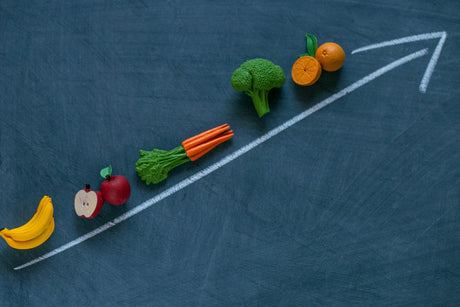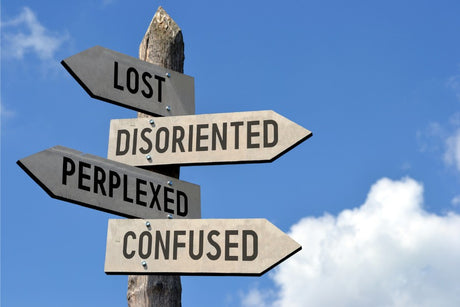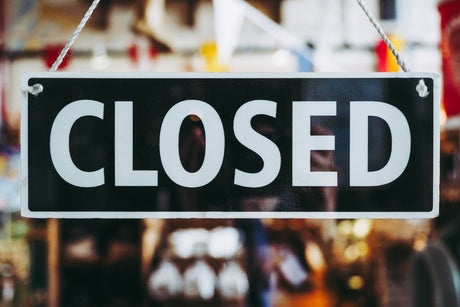Let's face it, Australia – coffee isn't just a drink, it's a lifestyle.
As the global price of raw coffee hit an all-time historic high in early 2025, doubling over the last 12 months, coffee lovers are seeing all types of coffee products continue to climb higher and higher.
Whilst many cafes have been trying their best to hold back price rises in fear of losing customers, it's now impacting the financial viability of cafe operations and cafes are lifting coffee beverage prices.
Global coffee supply chains operate in 4 to 6-month cycles, so it takes a while until increases fully flow through to the end consumer - a coffee drinker.
That means today's coffee cup price will unfortunately rise during 2025 as almost 40% of the recent raw coffee rises occurred only in the last few months.
To explain this another way, in terms of global coffee prices, today we stand in a valley of another climb ahead.
More Aussies ask the question: "Do I want to keep paying this much for my daily coffees? what if it lifts to $6 or $7 by the end of this year, as many are predicting? Perhaps I could be make it at home and save some money for other things."
Since the pandemic, the DIY coffee at home segment has continued to grow at a staggering 15+% annually and it's mostly been at the expense of the hospitality industry shrinking or contracting.
It's a situation not unlike what's playing out with alcohol - a drop in consumption and purchasing driven by the cost of living crisis and high interest rate environments.
The high growth in DIY Home Coffee far outstrips the annual increase in Australian coffee consumption, sitting at a modest 2%.
This dramatic market shift in how coffee is consumed also benefited white goods retailers of consumer coffee appliances like espresso machines, grinders and capsule systems as they continue to see high demand for in-home coffee making equipment.
Almost every home and work place in Australia has coffee making facilities and the post explains how many coffees you can typically make from a kilo of coffee beans at home.
Then you can do the maths to work out what you could save each month and whether it's also worthwhile investing in coffee systems for home and how the returns stack up.
You might be surprised by just how much it is.
The Numbers Game: Breaking Down pre-ground versus whole bean coffee
Whether you've got a bag of whole beans or pre-ground coffee, that 1kg bag ends up giving you the same amount of ground coffee. You guessed it, 1kg. So it doesn’t matter if you buy whole beans or ground coffee, you end up with the same amount of cups from your purchase.
That sounds obvious I know, but we do get asked that a little bit.
Do you get more cups from whole beans or pre-ground ?
The answer is not so straightforward as it will depend upon your brew method and at what stage in your personal coffee journey you are for taste and quality expectations.
Hands down, the very best way to enjoy freshly roasted coffee is to grind whole beans just moments before brewing. There is a reason cafes only grind the whole bean coffee after taking your order.
Pre-ground coffee stales rapidly, even inside of a sealed, unopened bag it loses the volatile compounds like aroma, flavor and body, particularly in warmer weather.
Ground coffee can lose up to 65% of the essential volatile compounds after 15 minutes oxygen exposure.
So let's say you own a grinder and use whole beans to enjoy a great tasting coffee.
Almost every grinder suffers from "retained grounds".
This is where ground coffee particles get trapped sitting inside the grinding chamber, around the burrs and on the ledge near an exit chute.
Some grinders, particularly larger models have higher amounts of retained grounds and it varies from model to model. You would be surprised at how much ground or partially ground coffee is trapped or retained after making your coffee.
Whilst there are expensive and innovative new grinders on the market today designed for almost zero retained grounds (some are hand grinders which could be impractical for the average home user), it's still a relevant factor to consider if you are trying to obtain the best tasting coffee as purging of the grinder is a necessity.
More than 99% of all grinders out there in homes or workplaces will suffer from retained grounds.
The best practice for owners of grinders with whole beans involves "purging" one or more shots from their grinder before attempting to make coffee in order to achieve the best tasting coffee by removing stale coffee from the grinder's chamber.
This is particularly important for espresso extraction as the grinder purge will be the only way to achieve a great tasting espresso coffee.
For those who don't purge their grinder, just try this simple trick.
Without purging your grinder, make 2 or even 3 cups of espresso coffee back-to-back in the same session to discover a dramatic improvement as you taste the coffee from cups 1, 2 and 3.
Cup 1 might be pale, thin and watery - a sure sign of stale "retained grounds" being used in the shot. Cups 2 and 3 will be better and it just shows you how big a difference exists.
A purge is normally recommended when the grinder is not used for a few hours and especially before the first cup in the morning.
So whole beans, when ground on demand, along with an essential purge at the beginning, may result in a lower number of brewed cups per bag of coffee.
As to whether you need to do a single shot or multiple shots to purge your grinder, we think that most people will eventually work out their own taste or shot quality preferences for grinder purging via trial and error.
Zero, one or two depends upon just how great you wish that cup to taste.
Experienced espresso coffee drinkers already know that pre-ground coffee is not suitable for the best tasting extraction and for sure this is a controversial statement, but it's also a well- proven fact, we are not revealing anything new or ground-breaking here (sorry for the pun).
As there will be less wastage from grinder purging with pre-ground coffee, you would expect to make more cups per bag of coffee. Just how many cups of difference between whole beans and ground coffee packs will depend upon the purge losses and brew methods.
What Is The Standard Shot Of Coffee
For our calculations, we're using the industry-standard single shot size of 7-8 grams. In reality though, a lot of people who are true coffee lovers don’t order singles very often. Double shots are just as common, so we'll cover both scenarios.
With so many different brewing devices available on the market, it's difficult these days to derive a "standard shot" when it comes to coffee as brewing devices utilize a different dosage level.
The historical standard for espresso shots originated almost 100 years ago from Italy where the coffee blends contained a high proportion of robusta.
Robusta delivers roughly 2.5 times the caffeine payload per gram of coffee compared to the sweeter tasting arabica found in most coffees sold in Australia - it also has an earthy, spicy or harsh taste compared to the higher grown arabica coffees..
The old standard for espresso was 7 - 8 grams and was called a "single shot".
Australian coffee drinkers evolved from the Italian style of roasted coffee towards a sweeter, cleaner and more acidic coffee brews made from 100% arabica with almost 90% of Australian coffee drinkers adding milk or dairy alternatives to their coffee brews.
Most modern machines are designed to use between 12 and 18 grams, depending upon the basket or filter size, which can be changed by the machine owner to suit their personal style.
Many espresso machines also support a "backward compatibility" to the single shot dosage for those drinkers preferring a smaller volume brew.
Similarly, cafes can use anywhere from 14 to 22 grams in their espresso extraction recipe and it's rare that a single 7 or 8 gram shot is used as it may require a different grinder setup in terms of grind size and dosage parameter, making it fiddly to switch between setups during busy service periods.
Depending upon the coffee and desired taste, it's possible to "split" an espresso shot so that a "double dosage" pours from both spouts into 2 cups at the same time.
Those coffee drinkers preferring a richer or more intense cup may brew their extraction for both spouts to flow into a single cup at the same time, e.g. a double shot.
This method of coffee preparation is highly popular, especially in Australia with 100% arabica, for making a large mug of cappuccino, latte or flat white as the milk or dairy alternative acts to weaken the coffee brew intensity, hence more coffee volume is needed in the cup.
Other brew methods such as plunger, drip, stovetop, Aeropress (14 - 15 grams), pour-over use dosage levels that match the device capacity so that there is a balanced brew. For example, a small 1-cup French Press is going to use less coffee compared to a 4-cup French Press.
The Single Shot Calculation
- 1kg = 1000 grams of coffee
- A single shot = 7-8 grams
- Potential single shots per kg: 125-143 shots
Per kilogram, depending on dosage, you can expect to get a minimum 125 single shot coffees assuming there is no wastage from grinder purging.
The Double Shot Calculation
- Double shot = 12 -18 grams
- Potential double shots per kg: 55 - 83 double shots
Per kilogram, depending on dosage, you can expect to get on average about 69 double shot coffees.
It's important to be aware that the dosage required by your coffee brewing device might be different from the size used in our example calculations.
Your style or technique of brewing also determines the number of coffees obtained from a pack of coffee.
There Are Some Real World Variables
Before you start doing more maths in your head, remember these factors can impact your coffee count:
- Grind size
- Brewing method (espresso, pour-over, French press)
- Personal coffee strength preference
- Machine/device efficiency
The above variables affect the calculation depending upon how you make your coffee.
For the purpose of this blog post, we will just stick to the basic maths from above. However, we thought it was important to note your brew method as well as your technique both make a big difference to output.
A baseline Spend On Coffee Chop Coffee (sit in or takeaway)
So it is time to talk dollars and sense.
Let's base this on a single person buying one coffee per day from a coffee shop, 7 days a week, compared to making one coffee per day at home.
-
At the time of writing, we assume the average espresso coffee is priced in a decent cafe at $5.
-
Seeing as we took the average cost of a coffee into account, let's take the average for home brewed too.
If you make half single shot, and half double shot from a kilo of coffee, then you will get 93 coffees from a kilo (minimum from the above calculations). If a 1kg bag of coffee from MyCuppa costs $48 including shipping, then the cost per coffee from one kilo is approximately: 52 cents, but let’s say 55 cents to make the maths easy and allow for some wastage losses.
Based on these calculations, it is roughly nine times more expensive to buy a coffee from a coffee shop, then to make it at home yourself.
The ingredients alone may not be a fair comparison of a raw material versus a finished product at a cafe, plus milk or dairy alternatives are excluded.
Allowing for the worst case energy scenario of an advanced, high-end espresso machine needing 15 minutes of electricity at 1.5KW with a tariff of 28 cents per KW, we add 10 cents of electricity to our 55 cent ingredients, giving us around 65 cents per cup, excluding the amortization of the brewing device and any added milk or dairy alternative.
Monthly Saving From Making Coffee At Home
If you were to make one coffee at home per day for one month, instead of buying it at a coffee shop, you could save up to $131. Not to mention the savings on waste if you get a take away cup.
The maths is simple :
30 times 65cents at home = $19
30 times $5 at a coffee shop = $150
If you have a partner then that quickly becomes a $260 saving per month, or more if you have many cups per day.
Tips For Maximum Coffee Economy
There are a few other things you can do to help make sure you save money when making your coffee at home. Here are a couple of tips to minimise your spend
1. Buy Whole Beans: They stay fresher longer and give you more brewing flexibility, however, be mindful if you perform grinder purging before making the first espresso there may be some sacrifice which is ultimately worth it with incredible improvements in taste.
2. Invest in a Good Grinder: Consistent grind = better extraction, less sink shots and waste.
3. Buy in Bulk: Buy a few kilos at a time and then you will save on the cost of delivery too. Freeze the other packs and once you remove the pack from the freezer, don't put it in the fridge.
4. Buy a Variety: Buy a variety of fresh roasted beans. Maybe from different regions or blends. This can keep it exciting and prevent pallet fatigue.
5. Don't fall into the trap of thinking the longer you run a brew, the stronger the cup. The flavor of coffee is an oil which is extracted during the brewing process. There is only so much "oil" that can be extracted from a ground coffee particle and running more hot water over that coffee not only makes the brew weak, it also increases the risk of bitterness and taints being released from the ground coffee particles. For espresso extraction, as the coffee pour starts "blonding" or going pale/white, it's time to think about stopping extracting. Most of the "solids" for coffee appear in the first 15 seconds of a brew (excluding any pre-infusion/bloom time).
Great coffee doesn't have to cost the earth. Sometimes, the best brew is the one that saves your wallet while satisfying your caffeine cravings.
Buy the best, brew smart, drink well, save big – MyCuppa.com.au









